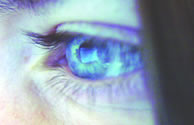Outlining a copyright agreement in 140 characters
As brands and newsrooms race to secure permission to use photographs and videos shared on the social web, is it reasonable to expect content owners to understand the complexities of copyright law from a single tweet?
Achieving and maintaining popularity and prominence online has become a daily challenge for brands and publishers. The seemingly insatiable demand from social media audiences for a stream of timely, entertaining and provocative posts in their newsfeeds has challenged even the most creative teams to reconsider their content strategies.
One solution to emerge is the inclusion of eyewitness media in stories and campaigns, i.e. photographs and videos captured by the general public instead of commissioned professionals.
This discovery has prompted many brands and publishers to resource a fulltime 'social newsroom' dedicated to finding and curating relevant content from Instagram, Twitter, Facebook and YouTube. In most cases, the content owners are happy and often excited about their contributions being used.
Shorthand ways of securing permission
In one example, the official Disney Fan Club asked fans to share their first Disney memories using the hashtag #WDIFS4U.
Users who obliged promptly received a permission request from Disney, which linked to full, detailed terms of use, which included the following:
We do not claim ownership to your User Generated Content; however, you grant us a non-exclusive, sublicensable, irrevocable and royalty-free worldwide license under all copyrights, trademarks, patents, trade secrets, privacy and publicity rights and other intellectual property rights to use, reproduce, transmit, print, publish, publicly display, exhibit, distribute, redistribute, copy, index, comment on, modify, adapt, translate, create derivative works based upon, publicly perform, make available and otherwise exploit such User Generated Content, in whole or in part, in all media formats and channels now known or hereafter devised (including in connection with the Disney Services and on third-party sites and platforms such as Facebook, YouTube and Twitter), in any number of copies and without limit as to time, manner and frequency of use, without further notice to you, with or without attribution, and without the requirement of permission from or payment to you or any other person or entity.
Disney speeds up the process of informed consent even further by appearing to automate its responses on Twitter and asking the recipient to reply simply using the hashtag #YesWDIFS4U.
This technique is also employed by a platform called Capture, which secures permission from content owners on behalf of its subscribers.
For example, users have been asked to reply to a permission request from the Weather Channel using the hashtag #yesweather and invited to view linked-to licence terms, which include:
 Your User Content License to Capture: By Posting or licensing Your User Content on or through the Service, and subject to Capture's Privacy Policy, you grant Capture a perpetual, irrevocable, transferrable, world-wide, non-exclusive, royalty-free license to use, reproduce, prepare derivative works, distribute to the public, perform publicly, modify, remove, publish, transmit, or display Your User Content for any purpose, including the right to sublicense (through multiple tiers of sublicensees) for use outside of the Service, without compensation to you, including for the purpose of promoting Capture and its services.
Your User Content License to Capture: By Posting or licensing Your User Content on or through the Service, and subject to Capture's Privacy Policy, you grant Capture a perpetual, irrevocable, transferrable, world-wide, non-exclusive, royalty-free license to use, reproduce, prepare derivative works, distribute to the public, perform publicly, modify, remove, publish, transmit, or display Your User Content for any purpose, including the right to sublicense (through multiple tiers of sublicensees) for use outside of the Service, without compensation to you, including for the purpose of promoting Capture and its services.
The idea of granting permission using a hashtag seems problematic for a number of reasons. Firstly, the content owner could easily delete a comment where the hashtag is featured, or even delete the entire post. Secondly, any user could add that hashtag to a photo or video that they have uploaded and unwittingly grant permission for it to be used by a third party. For example, the hashtag #yesweather could be used coincidentally without prompting yet be captured by an automated process.
A third concern is that by automating these permission requests, publishers have no way of ensuring that they are communicating with the person who originally took the photograph or determining whether the photograph has been captured or scraped from another source.
The importance of clarity when seeking permission
This leads us on to the issue of securing consent to feature eyewitness media that was not commissioned as part of a campaign and was not intended to appear anywhere outside of the social platform to which it was originally uploaded.
Some of the most defining news footage of the past few years was captured by eyewitnesses with a smartphone and uploaded to social media before television crews even reached the scene. In many cases, the UK fair dealing defence for reporting current events would apply (at least when the footage is a video rather than a photograph), so seeking permission is not necessary. However, it worth acknowledging the considerable ethical concerns that these breaking news examples present wherever the name or location of the eyewitness is revealed (this article written after the Charlie Hebdo attacks in January explores those concerns in more detail).
![]() In cases where permission is sought, newsrooms are increasingly adopting a similar technique to the Disney tweet presented above, but often without linking to a terms of use agreement. Newsworthy footage may well generate many permission requests from newsrooms within a short period of time. Bearing in mind the Twitter character limit, they usually ask for permission to use the content on named or unnamed platforms, including in broadcast and online.
In cases where permission is sought, newsrooms are increasingly adopting a similar technique to the Disney tweet presented above, but often without linking to a terms of use agreement. Newsworthy footage may well generate many permission requests from newsrooms within a short period of time. Bearing in mind the Twitter character limit, they usually ask for permission to use the content on named or unnamed platforms, including in broadcast and online.
There is typically no clear indication of what these terms really mean, how the footage may be used or where it might end up: A recent example of this lack of clarity involved a news agency which secured consent via Twitter, going on to feature the content with its own watermarked logo on its YouTube channel, with no attribution, and an instruction asking others to contact it directly if they wanted to use the footage. Perhaps the eyewitness would have felt differently about granting permission if he fully understood how it might then be monetised.
What wording should be used?
The issue of whether eyewitnesses should be paid for newsworthy images is hotly debated but early findings from research into the attitudes of news audiences suggests that people are more likely to ask for payment if the permission request is worded in a way that suggests it is legally binding.
The research, conducted by Eyewitness Media Hub and due for publication this month, asked focus groups to respond to a series of real tweets sent by news organisations that referenced "affiliates", "worldwide distribution" and "perpetuity". Participants agreed that they would be much more wary about saying yes if presented with these phrases, than if they received a simply worded request such as "Can we use your photo with credit?" Given tweets such as those asking for permission to use "on our platforms, distributed worldwide to our affiliates in perpetuity" do not provide watertight legal protection in any event, it has to be asked whether it is necessary or best practice to use them. Eyewitnesses who receive these requests have often experienced a traumatic event and can find such language overwhelming and intimidating.
Whether there is a need to seek permission at all is another contentious issue for newsrooms, since some senior editors argue that photographs and videos on social media are posted with the explicit intention of being shared with a wider audience than the user's immediate following (see our article on dealing with UGC in news reporting for more on this).
Findings from another research study by Eyewitness Media Hub, also due for publication in May, reveal that a small number of people whose footage has been taken from social media were distressed and alarmed to find that it had been featured in news coverage without their permission.
 At the point of upload, eyewitnesses rarely have access to advice or representation. It would certainly be useful to agree an approach that both provides legal comfort and is ethically appropriate so that all parties are protected from repercussions and which would allow for these rich and valuable contributions to continue.
At the point of upload, eyewitnesses rarely have access to advice or representation. It would certainly be useful to agree an approach that both provides legal comfort and is ethically appropriate so that all parties are protected from repercussions and which would allow for these rich and valuable contributions to continue.
If you have any questions on this article please contact us.
Eyewitness Media Hub is a non-profit that supports the creation, discovery, verification and publication of images and videos sourced from the social web.


Jenni Sargent of Eyewitness Media Hub
Jenni looks at the practicalities and ethics involved in exploiting UGC.
"At the point of upload, eyewitnesses rarely have access to advice or representation. It would certainly be useful to agree an approach that both provides legal comfort and is ethically appropriate."

